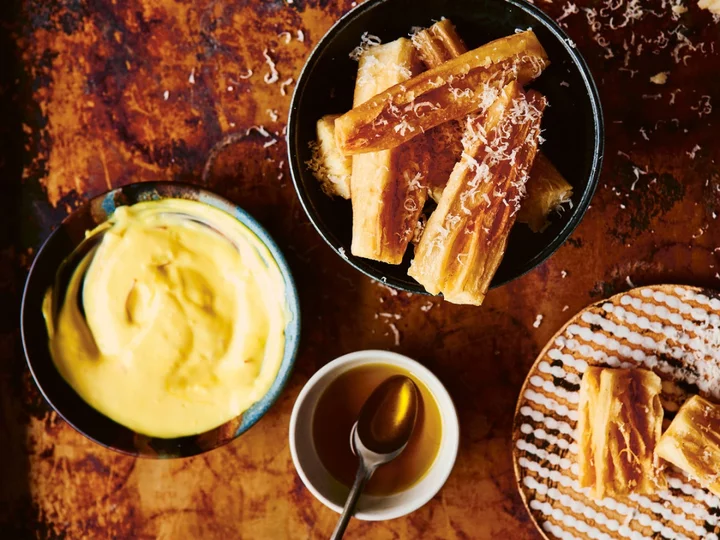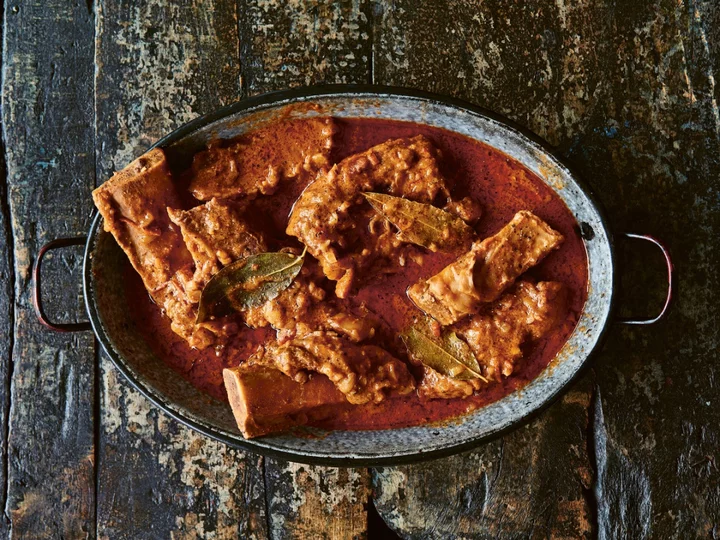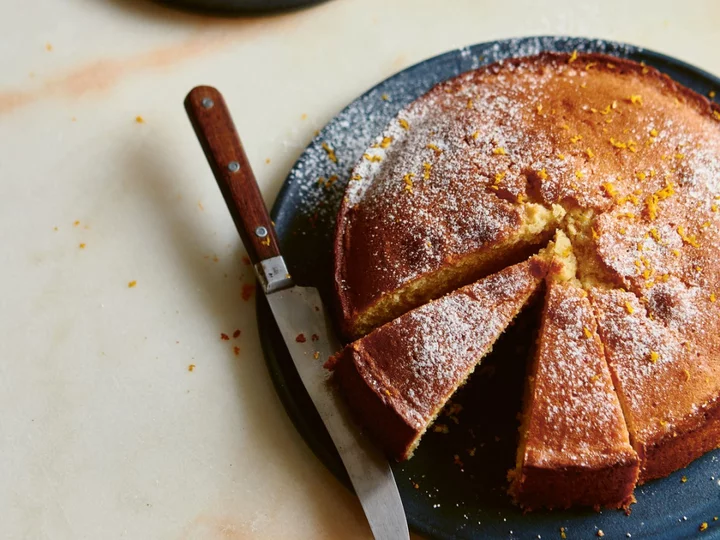
MrBeast sues to shut down the ghost-kitchen the produced MrBeast Burger
YouTuber MrBeast is suing the ghost kitchen behind the MrBeast Burger to stop production of the popular burger, claiming the company is taking advantage of his brand to expand rather than focusing on the quality of the food.
2023-08-02 18:47

Irregular sleep patterns linked to harmful gut bacteria, study suggests
Irregular sleep patterns may be linked to harmful bacteria in your gut, new research suggests. The study is the first to find multiple associations between social jet lag – the shift in internal body clock when sleeping patterns change between workdays and free days – and diet quality, diet habits, inflammation and gut microbiome (bacteria) composition. According to the findings, even a 90-minute difference in the midpoint of sleep – half-way between sleep time and wake-up time – can encourage microbiome that has negative associations with health. Previous research has suggested that working shifts disrupts the body clock and can increase risk of weight gain, heart problems and diabetes. This is the first study to show that even small differences in sleep timings across the week seems to be linked to differences in gut bacterial species Dr Wendy Hall King’s College London However, according to researchers from King’s College London there is less awareness that the body’s biological rhythms can be affected by smaller inconsistencies in sleeping patterns. This is due to people working regular hours waking early with an alarm clock on workdays compared to waking naturally on non-workdays. Senior author Dr Wendy Hall from King’s College London, said: “We know that major disruptions in sleep, such as shift work, can have a profound impact on your health. “This is the first study to show that even small differences in sleep timings across the week seems to be linked to differences in gut bacterial species. “Some of these associations were linked to dietary differences but our data also indicates that other, as yet unknown, factors may be involved. “We need intervention trials to find out whether improving sleep time consistency can lead to beneficial changes in the gut microbiome and related health outcomes.” First author Kate Bermingham, from King’s College London and senior nutrition scientist at ZOE, said: “Sleep is a key pillar of health, and this research is particularly timely given the growing interest in circadian rhythms and the gut microbiome. “Even a 90-minute difference in the mid-point of sleep can encourage microbiota species which have unfavourable associations with your health.” Researchers suggest the composition of the microbes in the gut may negatively or positively affect health by producing toxins or beneficial products. Specific species of microbes can correspond to an individual’s risk of long-term health conditions such as diabetes, heart disease and obesity. The microbiome is influenced by what food someone eats, which makes the diversity of the gut adjustable. Researchers assessed a group of 934 people from the ZOE Predict study, the largest ongoing nutritional study of its kind. They looked at blood, stool and gut microbiome samples, as well as glucose measurements in people whose sleep was irregular compared to those who had a routine sleep schedule. Unlike past research, the group consisted of mainly lean and healthy individuals with most of them getting more than seven hours sleep throughout the week. The study, published in The European Journal of Nutrition, found that just a 90-minute difference in the timing of the midpoint of sleep is associated with differences in what the gut microbiome is made up of. According to the findings, having social jet lag was associated with lower overall diet quality, higher intakes of sugar-sweetened beverages, and lower intakes of fruits and nuts. This may directly influence the abundance of specific microbiota in the gut, researchers say. Three out of the six microbiota species more abundant in the social jet lag group have what researchers describe as unfavourable associations with health. They are linked with poor diet quality, indicators of obesity and cardiometabolic health, like heart attack, stroke, and diabetes, and markers in your blood related to higher levels of inflammation and cardiovascular risk. Previous research has found social jet lag is associated with weight gain, chronic illness and mental fatigue. Dr Sarah Berry from King’s College London and chief scientist at ZOE added: “Maintaining regular sleep patterns, so when we go to bed and when we wake each day, is an easily adjustable lifestyle behaviour we can all do, that may impact your health via your gut microbiome for the better.” Read More Charity boss speaks out over ‘traumatic’ encounter with royal aide Ukraine war’s heaviest fight rages in east - follow live N-Dubz cement comeback with first new album in 13 years Babies as young as four months have taste in fine art, study shows ADHD symptoms in children can be transformed with brain stimulation therapy
2023-08-02 17:28

Babies as young as four months have taste in fine art, study shows
Our taste in fine art can develop from a very early age, researchers have said, after they found babies as young as four months can demonstrate artistic preferences. When shown landscapes by the Dutch post-impressionist painter Vincent van Gogh, psychologists at the University of Sussex found both babies and adults mostly favoured the same paintings, with Green Corn Stalks (1888) proving to be the most popular. The team at the university’s Sussex Baby Lab also uncovered that infants liked paintings that had more edges – such as those featuring leaves or branches – and curved lines. In their findings, published in the Journal of Vision, the researchers said aspects of artistic preferences may be hardwired from an early age. Our study also appears to have identified features of adult aesthetics that can be traced back to sensory biases in infancy Philip McAdams Philip McAdams, a doctoral researcher at the University of Sussex and lead author on the paper, said: “It was fascinating to find that babies respond to the basic building blocks of the paintings, such as edges and colours, and that these properties could explain large amounts of why babies look at, and adults like, particular artworks. “Our study also appears to have identified features of adult aesthetics that can be traced back to sensory biases in infancy. “Our findings show that babies’ visual systems and visual preferences are more sophisticated than commonly thought.” For the study, which was in collaboration with children’s sensory brand, Etta Loves, the researchers recruited 25 babies, aged four to eight months, and 25 adults. The babies sat on their parent’s lap while 40 pairs of images, featuring landscape paintings by Van Gogh, were shown on a tablet. Adults were also shown the same paintings and asked which image in the pair they found to be more pleasant. Recordings showed babies looked longer at the Van Gogh landscapes that adults also rated as most pleasant. These paintings featured high colour and lightness contrasts as well as lots of the colour green. The most preferred Van Gogh painting was Green Corn Stalks whilst the least preferred was Olive Grove (1889). But researchers also found small differences in the artistic tastes between adults and babies. For example, they found that infants preferred paintings that contained the most edges and curved lines, which the adults did not seem to favour. Professor Anna Franklin, head of the Sussex Colour Group and founder of the Sussex Baby Lab, and lead author on the paper, said: “We’ve been amazed by how much the young babies responded to the art. “Although newborn babies’ vision is very blurry, our findings demonstrate that by four months old, babies can see well enough to look longer at some paintings than others, and can pay attention to many of the artistic details.”
2023-08-02 16:16

ADHD symptoms in children can be transformed with brain stimulation therapy
Stimulating the brain using electrodes could help ease symptoms of attention deficit hyperactivity disorder (ADHD) in children, a study has found. Transcranial random noise stimulation (tRNS) works by sending a mild electrical current to the brain through two electrodes on the scalp. The study, led by researchers from the University of Surrey and the Hebrew University of Jerusalem – and published in the Translational Psychiatry journal, explored the use of tRNS alongside cognitive training as a treatment for ADHD. Roi Cohen Kadosh, head of the School of Psychology and professor of cognitive neuroscience at the University of Surrey, said: “I believe that the scientific community is duty-bound to investigate and develop evermore effective and longer-lasting treatments for ADHD.” The clinical trial included 23 newly diagnosed and unmedicated children between the ages of six and 12, who were recruited from groups referred to the ADHD clinic by doctors, teachers, psychologists or parents. Researchers at the computerised neurotherapy lab at the Hebrew University of Jerusalem administered tRNS during cognitive training each weekday over a two-week period. The parents of 55% of the group reported “significant clinical improvement” in ADHD symptoms to researchers, compared to 17% in a control group that was given placebo brain simulation. Prof Kadosh said the findings demonstrate the treatment “has the potential to transform the lives of children and their families”. Future studies, with larger and more varied samples, should help establish this as a viable therapy for ADHD, and help us understand the underlying mechanisms of the disorder Dr Mor Nahum ADHD is a neurodevelopmental disorder and symptoms include hyperactivity, an inability to focus and impulsiveness. According to the National Institute for Health and Care Excellence (Nice), it is present in about 5% of children globally. Researchers are now preparing to start a larger clinical trial using tRNS and cognitive training. “If successful, this approach will be approved as a medical device for ADHD by the United States Food and Drug Administration,” Prof Kadosh said. Dr Mor Nahum is co-lead of the study and head of the computerised neurotherapy lab at the Hebrew University of Jerusalem. She added: “This is an important first step in offering new therapeutic options for ADHD. “Future studies, with larger and more varied samples, should help establish this as a viable therapy for ADHD, and help us understand the underlying mechanisms of the disorder.” Read More Charity boss speaks out over ‘traumatic’ encounter with royal aide Ukraine war’s heaviest fight rages in east - follow live Black LGBTQ+ icons everyone should know Ashley James: ‘We have a totally warped idea of what a mum should be’ Host Maya Jama’s glamorous Love Island outfits cost over £10,000
2023-08-02 15:51

Discovering Sierra Leonean flavours in South London
Chef Maria Bradford remembers the first time she came to Peckham market. Originally from Sierra Leone, she moved to England in her late teens, and after four years she was desperately homesick. She was living in Kent and felt far removed from her home of Freetown – until she went to Peckham in South London. “The first time I ever came to Peckham, it was such a shock. I didn’t think a place existed like that [in England] – it reminded me so much of the hustle and bustle in Freetown,” she says. “All of a sudden, you get off the train and you come to this place and you’re like, Oh my God. I’m home.” Bradford, now 42, says she “desperately needed” a place like Peckham, and has been coming to the market regularly ever since. We’re back there today – on a hot but overcast London day, and Bradford is showing me how to pick out the best Sierra Leonean ingredients. We go on a weekday, as she says a weekend would take us a lot longer to get round, once she’s spoken to all the aunties in the community who want a chat. As we walk through the market, Bradford starts talking about Sierra Leonean cuisine. “I would say it’s quite healthy. We eat lots of leaves and greens, and we eat a lot of seafood as well. There’s lots of layers to Sierra Leonean food, because we mix things like smoked fish and meat in the same dish… Because we use fish more as a flavouring.” The words that spring to mind when she thinks about the food of her homeland? “Healthy, homely, comforting.” Bradford continues: “I don’t know if that’s because I’m Sierra Leonean, it brings me that calmness and home feeling. That warmth. It feels like I’m sitting at the back of our house with my mum, my nan, my grandmother, my aunties and everyone – we’re sitting around cooking, and it feels like comfort.” When she really wants to feel comforted and soothed, Bradford whips up a bowl of egusi soup (egusi – also known as melon seeds – is a thickener, and the recipe includes oxtail, goat meat, white sorrel, smoked barracuda and Scotch bonnet chillies) that Bradford says is like a “food hug, because when you eat it all you want to do is sleep”. After looking at some of the outdoor stalls full of colourful produce – bright pumpkins, squat varieties of cucumber, browning plantains – we go into Bit By Bit, a Sierra Leonean shop run by Sarian Karim-Kamara. Karim-Kamara immediately starts singing Bradford’s praises (“you’re flying the Sierra Leonean flag – we’re so proud of you!”) and thumbing through her new cookbook, called Sweet Salone – a nickname for the country. The shop is full of speciality ingredients you’ll need to make some of the recipes in the book – from the brightly coloured red palm oil (a staple in the country) to frozen cassava leaves and smoked barracuda. Bradford is keen to promote local shops such as this one, saying: “People are really friendly and want to talk about the ingredients – they don’t just know about the ingredients, they know what to do with it, how to promote it… It’s nice to step into these shops and have conversations, because you might learn so much more than what you bargained for.” As well as running the shop, Karim-Kamara is an FGM campaigner – she’s just launched a new campaign with the Mayor of London – and runs a food bank out the back. “For three years I’ve been supporting refugees and asylum seekers, but the food bank is open now to the community because everyone is struggling,” she says. Karim-Kamara adds she doesn’t talk much about it because “some people are really shy… The way we do the service is people come to the back and help themselves”. We move onto another shop selling West African ingredients – including jute leaves, black velvet tamarind and white hibiscus – and Bradford strikes up a conversation with the shopkeeper, who says she’ll pre-order the cookbook and give it to her daughter, so traditional Sierra Leonean cooking continues down the generations. “The children that are born here, they don’t really know how to cook the traditional stuff,” Bradford says after this exchange. “They’ll be more gearing towards the Afro-fusion side. It’s really important we keep the core traditional stuff, and also keep it separate.” But Bradford is an advocate for Afro-fusion dishes as well, describing it as “taking traditional Sierra Leonean ingredients and using techniques we wouldn’t necessarily use to extract as much flavour from those things”. After working as an accountant for 10 years (which she hated), Bradford did an evening course at prestigious cooking school Leiths and set up a catering company, and now uses her classical training to give a spin on the dishes she grew up eating. Examples of Afro-fusion recipes in the book include cassava chips with truffle and Parmesan, and the oxtail pepe stew – which has red wine added, a French technique she drew upon to deepen the flavours. Whether it’s traditional dishes or Afro-fusion flavours, Bradford – who is still based in Kent – uses cooking to connect with her roots. It started when she first moved to the UK and was missing home. “So I started cooking, making stuff I like to eat with stuff I can get my hands on,” she says. One of the first dishes she made was peanut soup (“you can get peanut butter anywhere, and you can pick up chicken anywhere”) and it grew from there. “Cooking and throwing those things together to feel like you’re home, connecting back to Sierra Leone.” ‘Sweet Salone’ by Maria Bradford (Quadrille, £30). Read More A week’s worth of summery recipes (even when the weather is dire) The dish that defines me: Frank Yeung’s prawn wontons How to make cassava chips How to make a traditional Sierra Leonean rich cake How to make West African brasied beef shorts in peanut and coconut milk In Horto: Hearty, outdoorsy fare in a secret London Bridge garden
2023-08-02 13:54

How to make cassava chips
If you are not familiar with cassava, it is tuber with a waxy, bark-like outer skin and a starchy centre,” explains Maria Bradford, author of Sweet Salone. It’s a staple in Sierra Leonean households, and Bradford adds: “This recipe combines my beloved cassava with European ingredients, such as Parmesan and truffle. “The flavour is every bit as good as potato chips, if not better, with just the right subtle hint of earthy truffle. They’re crispy on the outside, tender on the inside, perfectly salted and mixed with Parmesan to take them over the top. A simply luxurious snack!” Cassava chips with truffle oil, Parmesan and saffron mayo Serves: 6-8 Ingredients: For the cassava chips: 1kg cassava 1 tsp sea salt 60g parmesan, grated Sunflower oil, for deep frying Parmesan shavings, to serve 3 tbsp white truffle oil For the saffron mayo: Large pinch of saffron 2 tbsp hot water 300g good-quality mayonnaise 1-2 cloves garlic, finely chopped Method: 1. To peel the cassava, cut the cassava crosswise into five to eight-centimetre pieces. Using a sharp knife, cut lengthwise through the bark-like exterior and into the pink skin beneath. Place the tip of the knife under the skin to loosen it and pull off the skin and bark. Cut into chunky chip-sized pieces. 2. As you work, rinse the cassava and put the pieces in a large saucepan with cold water so it doesn’t discolour. When all are cut to size, add the salt and bring the pan of water to the boil. Boil until the cassava pieces are tender when pierced with a knife, about 25 minutes. 3. Meanwhile, make the saffron mayo. Crumble the saffron threads into a small bowl and pour over the hot water. Let it steep for 10 minutes. 4. Stir the mayonnaise and garlic together in a bowl. Add the saffron water and stir to combine. Taste and season with salt. 5. When the cassava is tender, drain it in a sieve and set aside until completely dry. 6. Heat the oil for frying in a deep, heavy-based pan no more than half full. To test if the oil is hot enough, drop a small breadcrumb into the hot oil. It should sizzle and turn brown in 20 seconds. 7. Working in small batches so as not to overcrowd the pan, fry the cassava chips until nicely golden, five to 10 minutes per batch. Remove with a slotted spoon and drain on a baking sheet lined with paper towels. 8. Toss the fried cassava chips with grated Parmesan and the white truffle oil. Serve with the saffron mayo on the side. ‘Sweet Salone’ by Maria Bradford (Quadrille, £30). Read More A week’s worth of summery recipes (even when the weather is dire) The dish that defines me: Frank Yeung’s prawn wontons Discovering Sierra Leonean flavours in South London How to make a traditional Sierra Leonean rich cake How to make West African brasied beef shorts in peanut and coconut milk In Horto: Hearty, outdoorsy fare in a secret London Bridge garden
2023-08-02 13:52

Low and slow: Braised beef short ribs in peanut and coconut milk
The coconut is a truly tropical fruit, which spread on its own to tropic coastal zones all over the world. The flesh and milk from coconuts are widely used in African cooking in relishes, sauces, desserts – you name it,” says Maria Bradford, author of Sweet Salone. Braised beef short ribs in peanut and coconut milk Serves: 5 Ingredients: 5 beef short ribs 2 tbsp sunflower oil Steamed coconut rice or fonio, to serve Salt For the peanut and coconut sauce: 2¼ tsp cumin seeds ¾ tbsp coriander seeds 1 tsp West African Pepper Blend (see below) ¾ tbsp curry powder 3½ tbsp coconut oil 2½-3 large onions, finely chopped 25g garlic, grated 25g ginger, grated 1-2 Scotch bonnet chillies, seeds left in, finely chopped 45g tomato purée 250g fresh tomatoes, chopped ½ tsp coconut sugar 300ml coconut milk 3 bay leaves 3 thyme sprigs 100g unsalted smooth peanut butter (use one without palm oil) 500ml beef stock For the West African pepper blend: 2½ grains of paradise 2 tbsp black peppercorns 2 tbsp white peppercorns 1 tbsp cubeb pepper 3 tbsp allspice berries Method: 1. For the West African pepper blend: toast all the peppercorns in a dry pan over medium heat until fragrant. Allow to cool, then grind in a spice grinder or pestle and mortar. Store in an airtight jar. It will stay fresh for up to three months. 2. Preheat the oven to 150C/130C fan/300F/gas mark 2. 3. For the sauce, lightly toast the cumin and coriander seeds in a hot, dry frying pan until aromatic. Grind in a pestle and mortar or food processor, combine with the West African Pepper Blend and curry powder and set aside. 4. For the short ribs, heat the sunflower oil in a large frying pan over high heat. Season the short ribs with salt and add to the hot pan, frying on each side until golden brown, turning regularly. The aim here is not to cook them but to sear them and add flavour. Make sure to brown them well all over, then remove and set aside. 5. For the sauce, heat the coconut oil in a large heavy-based casserole or Dutch oven (use one with a lid). Add the onions and cook gently over low-medium heat until caramelised and very sweet. This will take up to 30 minutes and it’s important not to rush this process. Add the garlic, ginger and chillies and cook, stirring, for five minutes more. Add the spices and cook for a further five minutes on low heat, stirring to prevent sticking. 6. Add the tomato purée, chopped tomatoes, coconut sugar, coconut milk, bay leaves, thyme sprigs, peanut butter and beef stock to the pan. Stir well to combine, bring to the boil then add the short ribs to pan, making sure they’re all covered by the sauce. 7. Cover with the lid and cook in the oven for four to five hours or until the meat is tender and falling off the bone. Remove from the oven, taste and add salt if needed. Serve with steamed coconut rice or fonio. ‘Sweet Salone’ by Maria Bradford (Quadrille, £30). Read More A week’s worth of summery recipes (even when the weather is dire) The dish that defines me: Frank Yeung’s prawn wontons Discovering Sierra Leonean flavours in South London How to make cassava chips How to make a traditional Sierra Leonean rich cake In Horto: Hearty, outdoorsy fare in a secret London Bridge garden
2023-08-02 13:46

How to make a traditional Sierra Leonean rich cake
I have fond childhood memories of the preparation process involved in making this cake,” says Maria Bradford, author of Sweet Salone. “We would often cream the butter and sugar by hand using a wooden spoon in Sierra Leone and this could take hours, but the end result was worth it. The next step is where Sierra Leonean ingenuity comes in. We would butter the inside of empty powdered milk tins and use these as baking tins. “The cake was then baked outside in the open on an improvised oven, with a large pot placed on top of three stones, with sand spread across the base. We put the cake tins on top of the hot sand in the pot and put the lid on. Our fuel was wood or charcoal, and when the fuel was very hot, we put lumps of hot charcoal on top of the lid of the pot to brown both the top and bottom of the cake.” Sierra Leonean-style rich cake Serves: 6-8 Ingredients: 150g butter, plus extra for buttering 150g caster sugar 3 eggs 50g plain flour 150g self-raising flour 1-2tbsp full-fat milk Finely grated zest of 1 orange 1 tsp natural orange flavouring (I use Steenbergs’ Organic Orange Extract) Method: 1. Make sure all the ingredients are at room temperature. Generously butter an 18-centimetre cake tin. Preheat the oven to 180C/160C fan/350F/gas mark 4. 2. Using an electric hand-mixer, cream the butter and sugar together in a large mixing bowl until the mixture is pale, light and fluffy (10-15 minutes). Don’t rush this step; the more thoroughly the butter and sugar are combined, the lighter the cake will be. Add the eggs, one at a time, beating the mixture well between each addition. Add one tablespoon of flour with the last egg to prevent curdling. 3. Sift both flours into the bowl and gently fold in, adding just enough milk to give a mixture that drops slowly from a spoon when the spoon is held away from the bowl. Fold in the orange zest and orange flavouring. 4. Pour the batter into the prepared tin and bake for 30-40 minutes, or until golden-brown on top and a skewer inserted into the centre comes out clean. 5. Turn the cake onto a cooling rack and leave to cool. Slice and enjoy. ‘Sweet Salone’ by Maria Bradford (Quadrille, £30). Read More A week’s worth of summery recipes (even when the weather is dire) The dish that defines me: Frank Yeung’s prawn wontons Discovering Sierra Leonean flavours in South London How to make cassava chips How to make West African brasied beef shorts in peanut and coconut milk In Horto: Hearty, outdoorsy fare in a secret London Bridge garden
2023-08-02 13:45

Mideast countries that are already struggling fear price hikes after Russia exits grain deal
Egypt and other lower-income Middle Eastern countries like Lebanon and Pakistan are worried about what comes next after Russia pulled out of a crucial wartime grain deal
2023-08-02 13:23

BOJ’s Key Policy Architect Says YCC Shift Doesn’t Mean Exit
Deputy Governor Shinichi Uchida said that the Bank of Japan is far from an exit or raising its
2023-08-02 11:52

Toyota’s Iconic Land Cruiser Offroader Returns to North America
Toyota Motor Corp. is bringing its iconic Land Cruiser back to North America next year with slimmer dimensions
2023-08-02 10:28

Starbucks reports record revenue as China booms, but sales still fall short of expectations
Starbucks reported record revenue in its fiscal third quarter as sales in China roared back to life
2023-08-02 07:00
